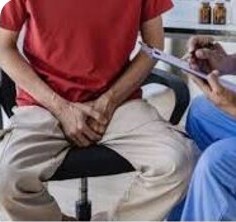Erectile dysfunction, often called ED, isn’t just about those frustrating moments in the bedroom. After prostate surgery, it’s a pretty common issue, and trust me, knowing you’re not alone can be comforting. Many guys face this hurdle, and it’s nothing to be ashamed of. Digging into the stats, ED affects a considerable chunk of men, with percentages creeping up as we age, especially post-surgery.
Now, let’s take a peek at what the latest research tells us about this post-surgery scenario. Turns out, there’s been a ton of attention on why ED tends to spike after operations like a prostatectomy. Researchers are burning the midnight oil, trying to unravel the connection and improve those recovery curves. One big takeaway is the importance of early intervention, which can make a world of difference.
Factors like nerve damage during surgery, blood flow alterations, and hormonal changes all play a part in erectile dysfunction popping up after the procedure. But don’t sweat it, understanding these factors means doctors can better address them. If you’re wading through this, remember you are part of a broader group of men, and loads of studies are ongoing to help lighten the load.
It’s crucial to be aware of what impacts erectile health post-surgery. One interesting discovery is that maintaining a healthy lifestyle, including exercise and a balanced diet, can positively affect recovery. So, while doctors figure out new treatments, it never hurts to help your body along with good ol’ healthy habits.
Main Causes and Diagnostic Measures for Erectile Dysfunction Post-Surgery
So, we’re dealing with erectile dysfunction, especially after a surgery like a prostatectomy. Trying to figure out the main cause isn’t always a straight line, but a lot of it boils down to nerve and blood vessel mishaps during the procedure. It’s like having a bunch of wires get tangled, which affects how things work later.
If you’re thinking of getting a diagnosis, well, there’s a series of tests that can help pinpoint what’s happening. These might include things like a penile ultrasound to check blood flow, or even a nocturnal penile tumescence test (sounds fancy, I know) to see if you’re having erections while asleep.
There’s a treasure trove of erectile dysfunction research studies that shine a light on dealing with ED post-prostate surgery, showing us how crucial it is to get the right diagnosis early. This means bringing any concerns straight to your healthcare provider, who can guide you with the right questions to reach the best solutions.
Remember, communication with your healthcare team is key here. Be direct and open about your concerns and symptoms. Whether it’s about struggling with firmness, frequency, or any other aspect, don’t hold back. They hear it all and are there to help steer you in the right direction for treatment options.
Treatment Options: Navigating Solutions for Erectile Dysfunction
When it comes to tackling erectile dysfunction, especially post-surgery, there’s a whole arsenal of treatment options out there. Whether you’re looking into medications, therapy, or other interventions, the main goal is finding something that clicks with your needs and lifestyle.
Medications like PDE5 inhibitors (think Viagra, Cialis) often pop up as popular choices. These guys are all about increasing blood flow, giving you the boost needed when the time comes. But hey, they’re not a one-size-fits-all solution, so having a candid chat with your doc about pros, cons, and potential side effects is super important.
If you’re exploring beyond the pill bottle, therapies such as vacuum erection devices or penile injections might also be on the table. While these might sound a bit intimidating, they’re great non-surgical alternatives when oral meds aren’t doing the trick.
Now, let’s touch on something that’s been buzzing around: the idea of a ‘permanent cure for erectile dysfunction.’ Just to put it out there, it’s crucial to manage expectations. There’s ongoing research aimed at more lasting solutions, but being cautious and informed is key while exploring new treatments.
Deciding on the right course often means considering personal comfort, the severity of ED, and other health factors. It’s like piecing together a puzzle where your lifestyle and personal preferences guide the treatment path.
Practical Guides and Resources for Overcoming Erectile Dysfunction
Let’s dig into some practical guides and resources that’ll help you feel more in control of your ED journey post-surgery. There’s a bunch of insightful ‘Erectile Dysfunction Book PDFs’ floating around, packed with tips and methods for managing your condition. A good read can sometimes offer that extra nudge towards finding the right solution.
Now, it’s common to hit walls when you’re thinking about seeking help, whether it’s fear of embarrassment or just not knowing where to start. Breaking through these barriers is crucial. Connecting with communities online or local support groups can offer not just advice but camaraderie with others in similar situations.
Real-life experiences can be an anchor during challenging times. Many studies include case studies and testimonials from fellow men fighting the same battle. These narratives often provide not just solace but practical insights into what’s worked for others.
Finally, let’s not forget the importance of keeping the conversation alive at home. Discussing ED with your partner might feel like walking a tightrope, but open communication often paves the way for better understanding and intimacy. Sharing concerns and strategies can foster a supportive environment, boosting both emotional and physical connections.

